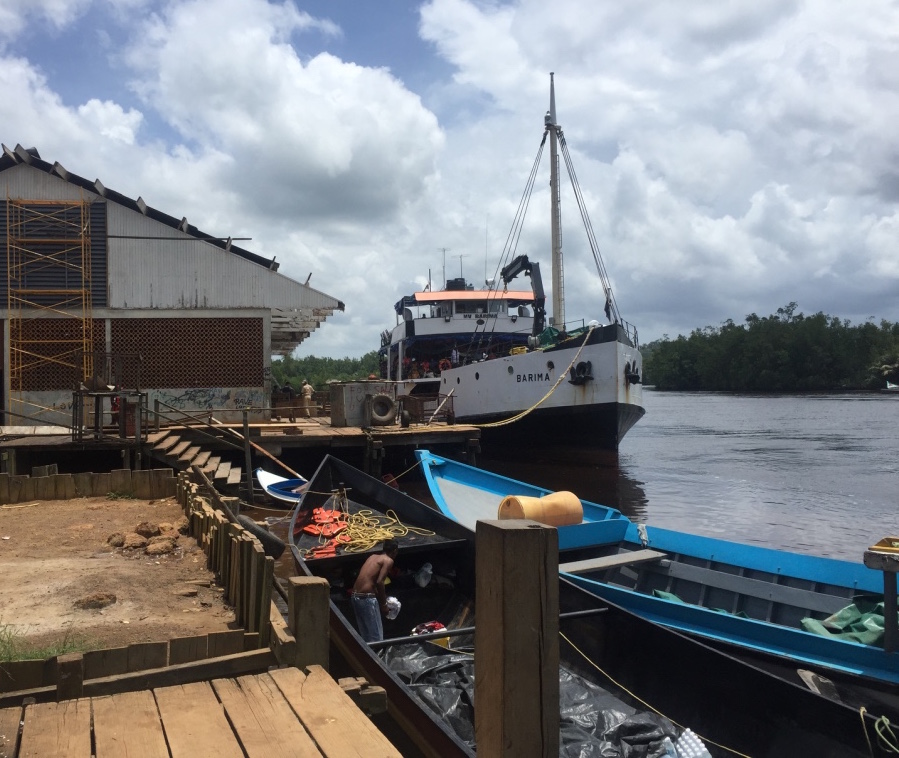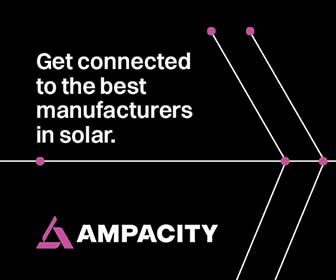Off-Grid Solar in the Rainforest
The quality of human cohabitation strongly depends on a reliable access to energy. This can be a feat for any large, metropolitan city; a small community in an isolated or off-grid location faces an enormous challenge when establishing a sound and affordable power supply. Remote communities often meet this challenge by utilizing fuel-based energy generating technologies, such as diesel generators. However, this kind of power supply represents a heavy burden, since fuel prices are unstable, the generators require extensive maintenance, the logistics of diesel is expensive and time-consuming and, of course, the emissions cause serious pollution and harm to the natural environment. To overcome the dependence on fossil fuels, more and more remote communities are choosing to install off-grid, renewable energy systems.

Thanks to its flexible application and low maintenance requirements, solar technology represents an ideal opportunity for remote areas to ensure a consistent energy supply, while attending to the challenges of climate change. As one of the clean energy pioneers in the Caribbean, the government of Guyana strives towards a 100 percent renewable energy supply in the country by 2025, and aims to equip even remote rainforest communities with solar energy installations. Associated with the Ministry of Public Infrastructure of Guyana, the government-run Hinterland Electrification Company is implementing solar projects in remote areas to help reduce their dependence on polluting diesel generators.
In the remote Mabaruma Region, in the very North of the country, an international company has stepped in to install a 400 kWp off-grid solar solution, together with an energy management and energy storage capacity of 400 kWh. After a thorough planning and logistical stage, this project has been recently completed and implemented. Given the challenges of a remote solar power project, special consideration was taken with each step in the process. This project was a far cry from most solar projects in densely populated and interconnected areas.
Overcoming logistic hurdles through diligent preparation
The small, remote community of Mabaruma is located close to the Venezuelan border, and surrounded by dense rainforest vegetation. Since there is no major seaport near the community, the delivery of the materials needed for the solar systems represented the first major challenge. Ensuring the timely and safe delivery of the modules, substructure, batteries, and inverters, required diligent and accurate planning and preparation. Unlike other solar projects, the components for the solar systems in Mabaruma could not be delivered directly to the construction site via containers and trucks. The parts were first delivered to the international seaport in Georgetown, the capital of Guyana, then moved out of the containers, loaded onto smaller boats, and finally delivered by small local trucks to the power plant. Every step of this transport chain had to be carefully orchestrated to ensure a smooth and safe transport of the materials.

Wildlife conditions required additional planning. While realizing a solar energy project in the rainforest, it is especially important to take into account the environmental aspects around the installations. Besides generating solar power, the renewable energy systems also represent an opportunity to increase the biodiversity value of a site. The rainforest of Guyana is characterized by a high biological diversity with a unique flora, and represents a rich habitat for endangered species such as the Tepui swift, the jaguar, and more than 850 species of birds.
To maintain this exceptional environment, natural habitats like field margins were preserved. Even self-seeding plants and security fences promoted diversity during the construction process. As some animals may represent a threat to solar plants and their smooth operation - such as small rodents cutting cables - the security fences not only protect the installations, but also the animals. At the same time, they offer a surface for growing climbers and the resulting nectar sources.
Apart from the logistical challenges arising from the remote location of the Mabaruma community, the conditions around a site in the middle of the rainforest needed special and highly customized preparation. Due the difficulty in accessing such a remote location, all necessary components and materials had to be procured in advance; it's almost impossible to purchase any of these parts locally. Careful preparation and extraordinary attention to detail allowed the local teams to properly execute each construction stage, according to the design and schedule.
Continuous monitoring and surveillance of the site was essential during the construction phase; the project site was prepared and cleaned, and a fence was erected. To further protect the components during the installation process, local security guards were hired to monitor the area 24/7.
While supervisors coordinated the implementation of the project, the installation itself used labor from a local workforce. After training on site, the workers were able to provide the necessary support to the technical team, and complete installation. In addition to creating jobs and adding to the local infrastructure, the project helped residents gain a new understanding of nature and wildlife conditions, which will help ensure the success of this exceptional venture.
Establishing off-grid solar in such remote areas as rainforests represents a major challenge. Above all, it requires accurate and diligent planning and preparation of all project stages. It may not be easy, but the extra effort definitely pays off - not only for stakeholders, but also for the local communities that are no longer dependent on fossil fuels, able to benefit instead from reliable and sustainable solar energy.
Thomas Beindorf is the Chief Technical Officer of The meeco Group. He is an experienced mining engineer with 30 years of experience working on the development and management of technical installations, the supervision of respective teams of engineers and workers and the installation of facilities worldwide.
The meeco Group | www.meeco.net
Volume: 2018 May/June











.png?r=7981)
